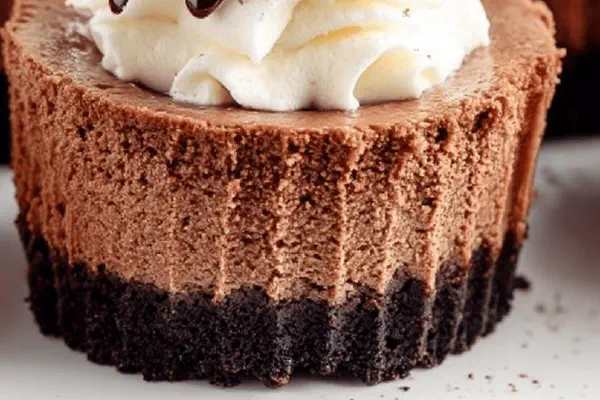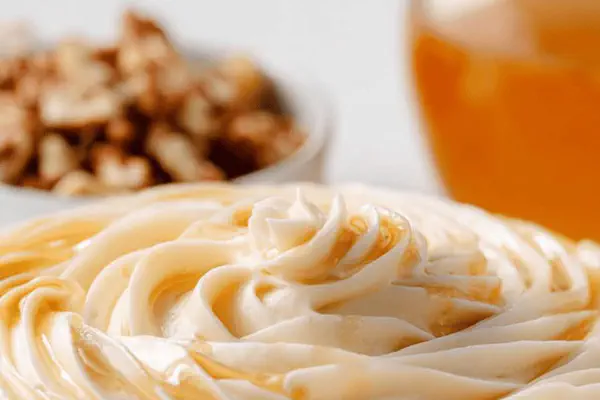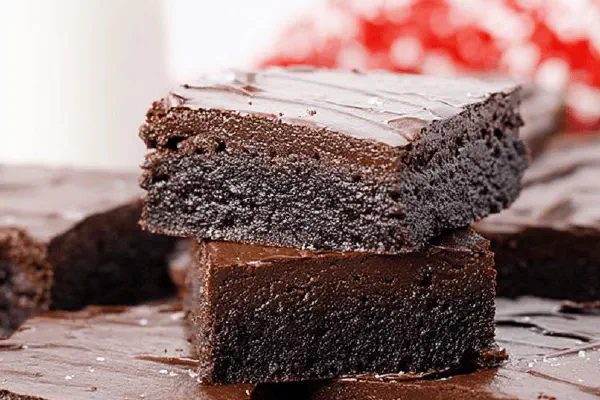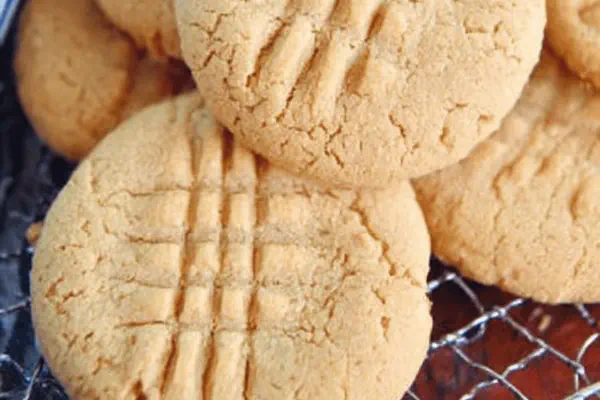Lemon Pavlova with Twist
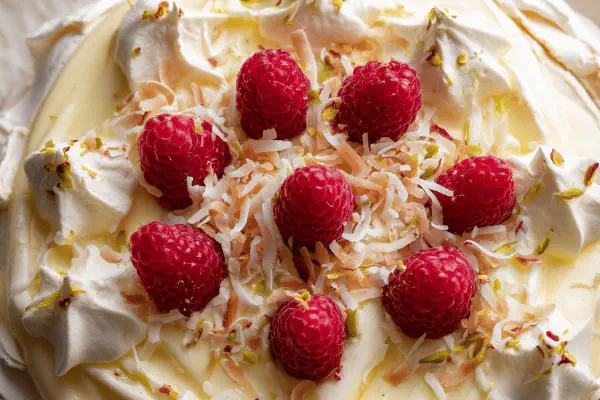
By Emma
Certified Culinary Professional
Ingredients
Meringue
- 6 egg whites
- 2 ml (1/2 tsp) apple cider vinegar
- 200 ml (3/4 cup plus 2 tbsp) powdered sugar
Lemon-yuzu filling
- 6 egg yolks
- 230 ml (1 cup) granulated sugar
- 120 ml (1/2 cup) lemon juice (about 2 large lemons)
- 80 ml (1/3 cup) yuzu juice or substitute with 30 ml lime juice + 50 ml lemon juice
- 50 ml (3 tbsp plus 1 tsp) unsalted butter
- 110 ml (7 tbsp plus 1 tsp) water
- 30 ml (2 tbsp) cornstarch
- 15 ml (1 tbsp) potato starch
- 50 ml (3 tbsp plus 1 tsp) cold water
About the ingredients
Method
Prepare Meringue
- Preheat oven to 95 °C (200 °F), slightly lower than usual to avoid browned edges but dry it properly. Line baking tray with parchment paper. Draw a 24cm (9.5 inch) circle as a guide — slightly smaller to keep meringue thick enough but lighter.
- Start whipping egg whites with apple cider vinegar — acts like cream of tartar to stabilize but doesn’t add tartness. Whip on medium speeds until soft peaks form. Gradually sprinkle in powdered sugar to maintain volume but steadily stiffen the whites. Don’t rush; sugar dissolving fully prevents gritty texture.
- Spoon the meringue onto parchment inside the circle, build up walls about 2.5 cm high with the back of a spoon. The center hollowed gently so filling sits nice but walls hold it in place. Rough texture preferred, not too polished - this traps air and adds bite.
- Bake low and slow for 4 hours 45 minutes. Check near the end: meringue should be matte, lightly cracked on top. Surface feels dry to touch. Remove from oven and leave inside overnight with door slightly cracked. If sticky next day, bake another 30 mins. Avoid sealing overnight; moisture ruins crispness.
Citrus filling
- Using a double boiler or heatproof bowl over simmering water, off direct heat, whisk egg yolks and sugar until pale and thickened. Feels lighter under whisk, takes a minute or two. Add lemon and yuzu juice plus water and butter—not too hot or you’ll scramble eggs in the next step.
- In separate small bowl, mix cornstarch and potato starch into cold water till lump-free. Stir starch slurry into citrus mixture while cooking gently over bain-marie, whisk constantly. As soon as thickened to a custard coating the back of a spoon, remove from heat to avoid graininess.
- Press plastic wrap directly on surface to avoid skin forming. Chill in fridge for at least 3 hours. Will continue to set and develop sharper citrus notes. Don’t taste hot; burns the tongue and masks true flavor.
Assembly and serving
- When meringue and curd are fully cooled, spoon the thick curd carefully into meringue center. Don’t fill to the brim; leave some space to avoid runoff or soggy base from condensation.
- Top with fresh raspberries and a sprinkle of shredded coconut for extra texture contrast and mild sweetness. Optionally, zest some lemon over top to reinforce brightness.
- Serve immediately for best crunch or within 2 hours. If left too long, meringue absorbs moisture, loses crunch.
Kitchen notes
- Apple cider vinegar safer than cream of tartar in my experience—less bitter, same stabilization. Using two starches in filling results in a silkier texture, one alone can be grainy or too thick. Yuzu adds floral complexity but lime juice combo is a fine substitute.
- Don’t speed bake meringue at higher temperature; dries unevenly, cracks extensively. Overnight drying is key for perfect texture. If you have humid kitchen, using a dehydrator or air-conditioned room helps prevent sticky meringue.
- Avoid metal bowls sitting around; egg whites pick up metallic taste. Glass or ceramic is best for whipping whites.
- In filling, constant whisking prevents lumps; stubborn ones can be strained through fine mesh. Butter added last for richness and shine, don’t skip it.
- If you get small sugar crystals after whipping whites, don’t panic. Beat some more or try heating sugar with tiny bit of water first next time to dissolve fully before incorporation.
- Leftover meringue scraps are great crushed over yogurt or ice cream for crunch.
Cooking tips
Chef's notes
- 💡 Start whipping egg whites medium-low, speed up gradually. Slow sugar addition stops whites collapsing. Powdered sugar must be finely ground—grainy ruins airiness. Apple cider vinegar replaces cream of tartar mildly; less bitterness. Observe soft peaks; shiny spots vanish, meringue shifts from glossy to matte, signals readiness for sugar.
- 💡 Draw the circle smaller than 24 cm if you want thicker walls. Building walls about 2.5 cm traps hot air; good for structure but don’t overdo or meringue cracks badly. Rough texture preferred on surface; traps air bubbles and crispness instead of smooth polish which cracks unevenly.
- 💡 Dry meringue low and slow at 95 °C. Baking longer than 4 hours needed; look for matte finish and slight cracks, dry feel, not sticky. Leave oven door slightly ajar overnight; closed traps moisture and softens shell. If sticky next day, extra 30 minutes bake. No shortcuts here.
- 💡 For filling, constant whisking critical during cooking over bain-marie. Add starch slurry slowly to avoid lumps; lumps mean starch too hot or not well mixed. Remove from heat as soon as thick enough to coat spoon back; overheating causes graininess. Press clingfilm on surface to stop skin form and chill at least 3 hours to set with sharper citrus flavor.
- 💡 Choose fresh raspberries firm but ripe, too much juice makes meringue soggy quickly. Coconut adds mild sweetness and chew contrast; swap pistachios cautiously if allergies, changes flavor profile. Assemble just before serving to maintain crunch; meringue sags within 2 hours if left open.
Common questions
Why use apple cider vinegar instead of cream of tartar?
I found vinegar gentler, less bitter note. Stabilizes whites but subtle flavor. Works well if you lack cream of tartar. Both stabilize whites differently, vinegar safer for delicate citrus profiles.
How to fix sticky meringue after baking?
Oven temp too high or door fully closed traps steam. Try extra bake 30 mins low temp with door cracked. If still sticky, reset oven temp and test smaller batch next time. Humidity affects too, dehydrator helps if kitchen damp.
Can lime juice replace yuzu in filling?
Yes, lime plus extra lemon juice offsets missing floral yuzu aroma. Not identical but tartness balanced. Alternatively, lemon only works but flavor flattens. Yuzu adds complexity but lime tweak saves curd.
How do I store pavlova leftovers?
Meringue not fridge-friendly long—loses crisp in hours. Store filling separately up to 3 days fridge. Assemble just before serving again. Wrapped loosely in cool dry place, meringue lasts 2-3 days but softens fast in humid air.
